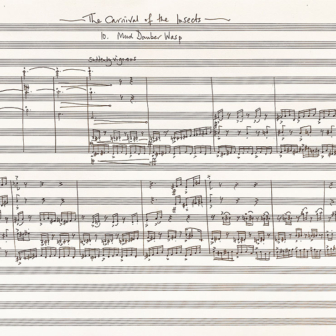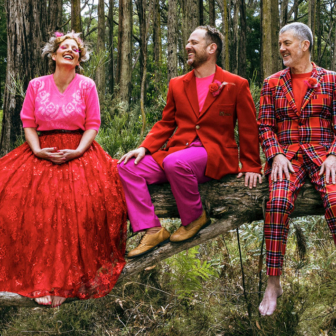WE’RE ALWAYS hearing that no one buys CDs of classical music any more, at least not in sufficient quantities to sustain interest in this art form among the major record labels. But that doesn’t mean that no one is listening. Martin Buzacott at ABC Classics (who, admittedly, may be whistling in the dark) insists that people are still buying tracks, either via downloads or on compilation discs, and that this new domestic habit of musical grazing – an aria here, an adagio there – is in turn making the experience of a concert, in which you can hear complete pieces, all the more special. Needless to say, I want to believe him.
But there is another way in which classical music is consumed and that is via DVDs of complete operas and concerts. On YouTube, of course, you can watch a hundred years of classical music-making by Strauss and Stravinsky, Toscanini and Furtwängler, Callas and Sutherland, Cortot and Glenn Gould, though only in five-to-ten-minute grabs, but thanks to the DVD and downloads many people now prefer to watch their operas and symphonies rather than simply listen to them.
Opera, you would think, is the musical genre that benefits most from being seen as well as heard. It is, after all, an art form that routinely lavishes lots of money on sets and costumes; famous film and stage directors bring their imaginative flair to the rehearsal room; and these days the singers, too, are often worth looking at. Opera Australia has begun releasing both CDs and DVDs of classic productions on its own label. So far the CD sets are primarily devoted to operas featuring Joan Sutherland, while the two DVDs consist of a couple of the company’s best-known stagings of recent years: Neil Armfield’s production of The Marriage of Figaro and Elijah Moshinsky’s Rigoletto. I haven’t seen Figaro on DVD, but Rigoletto is superb, Moshinsky’s twenty-year-old staging readily lending itself to a multi-camera shoot.
It’s always a dilemma, putting opera on the screen: do you keep your distance and show the stage (which is what the live audience sees and the director intends) or do you send the cameras in for close-ups? Television close-ups are virtually synonymous with naturalism, and opera, whatever its other qualities, doesn’t lend itself to that, but this filmed Rigoletto achieves an excellent balance. You never forget you are watching staged opera – how could you? – but the action is enhanced by the camera work. And if the acting is sometimes too big for the small screen, well the singing compensates. Emma Matthews is Gilda, Paul O’Neill is the Duke and Alan Opie is Rigoletto.
Watching opera on your television brings numerous advantages. You can, for example, have the subtitles on or off. Instant encores are another option. But there’s one important advantage in sound recordings. Listening to opera is like reading a novel: you make the pictures in your head; you’re in control. Your production might be set in any century, in any country. Your Duke might be young or old. Your Rigoletto might have his hump on his right shoulder or his left. And, perhaps most important of all, the score comes to the fore: the music carries the drama. But this is a composer talking.
A QUICK mention of three more music DVDs. With Daniel Barenboim playing Chopin in The Warsaw Recital and Pierre Boulez conducting Mahler with the Cleveland Orchestra (both from Accentus Music), there’s really not a lot to see. The piano recital focuses exclusively on the pianist and Barenboim is a very unshowy player (which is a good thing in terms of the music). Boulez, too, doesn’t do a lot, but if the alternative is another conductor’s histrionics, I’ll take Boulez. In any case, the camera’s slow progress around the golden art deco ceiling of Cleveland’s Severance Hall makes a very effective counterpart to the Adagio of Mahler’s Tenth.
Michael Nyman: Composer in Progress (Arthaus Musik) is a standard fifty-minute documentary with few surprises and no accompanying extras. We watch the Michael Nyman Band in concert and rehearsal – was it really impossible to include a complete performance on the disc? We see Nyman pursuing his new passion for film-making – what a shame we can’t see a few shorts! Instead we have people talking. There’s the composer himself, with an oddly self-conscious manner (more than once referring to himself in the third person), there’s Steve Reich and Volker Schlöndorff, and there are members of the Nyman Band discussing the pitfalls of playing his music: split lips for the trombonists and RSI for the string players.
The most revealing comment comes from long-time collaborator, saxophonist Andy Findon, who points out that on the page Nyman’s music seems nothing special; it’s only when you apply the sonorities of the Nyman Band that it comes to rude, raucous and totally distinctive life. •




